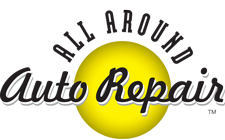When most people think about seasonal changes, they imagine swapping out clothes, adjusting thermostats, or preparing their homes. But your car also feels the effects of shifting weather, often more than you realize. From freezing winter mornings to scorching summer afternoons, seasonal changes have a direct impact on your vehicle’s performance, reliability, and safety.
Understanding how weather affects your car helps you anticipate issues, take preventive steps, and avoid costly repairs. Let’s dive into how different seasons stress your car and what you can do to keep it running smoothly year-round.
Winter: The Cold Weather Challenge
Winter is the season most drivers associate with car trouble, and for good reason. Cold weather puts significant strain on nearly every system in your vehicle.
Battery Drain
Car batteries lose a significant amount of cranking power as temperatures drop. At 32°F, your battery loses about 35% of its strength, and at 0°F it loses up to 60%. Combine that with thicker engine oil in cold conditions, and starting your car becomes much harder.
Prevention: Have your battery tested before winter begins. If it’s more than three years old, consider replacement.
Tire Pressure Fluctuations
Cold air causes tire pressure to drop, about 1 PSI for every 10°F decrease in temperature. Underinflated tires wear unevenly and reduce traction on icy or snowy roads.
Prevention: Check tire pressure weekly and inflate to the manufacturer’s recommended level.
Frozen Fluids
Coolant, washer fluid, and even fuel lines can freeze if you don’t have the proper fluid mix. Inadequate antifreeze levels are a common cause of winter breakdowns.
Prevention: Ensure your coolant is the correct ratio (usually 50/50 antifreeze to water) and use winter-grade washer fluid.
Wiper Blades and Visibility
Snow and ice quickly wear down wiper blades. Poor visibility is one of the leading causes of winter accidents.
Prevention: Replace wipers before winter, and keep a scraper and de-icer handy.
Spring: The Pothole and Rain Season
After winter’s snow and ice, spring introduces a new set of challenges.
Pothole Damage
Melting ice and salt-damaged pavement create potholes everywhere. Hitting them can damage suspension components, misalign wheels, and even bend rims.
Prevention: Drive cautiously on pothole-ridden roads, and schedule a suspension and alignment check in spring.
Rain and Hydroplaning
Spring showers bring slick roads. Worn tires with shallow tread increase the risk of hydroplaning, making stopping distances longer and steering less responsive.
Prevention: Check tread depth and replace tires with less than 4/32″ of tread.
Rust and Corrosion
Salt from winter roads lingers into spring, accelerating rust on the undercarriage, exhaust system, and brake lines.
Prevention: Wash your car thoroughly, especially the underbody, to remove salt and grime.
Summer: Heat Stress Everywhere
High summer temperatures might seem easier on cars than winter cold, but the truth is, extreme heat creates its own problems.
Overheating Engines
Hot weather pushes your cooling system to its limits. Low coolant levels, worn hoses, or a weak radiator can quickly cause overheating.
Prevention: Have your cooling system inspected, replace old hoses, and flush coolant as recommended.
Tire Blowouts
Heat causes air to expand. Combined with underinflated or worn tires, this can lead to dangerous blowouts, especially at highway speeds.
Prevention: Check tire pressure frequently and replace old or damaged tires.
Battery Evaporation
Just like cold drains battery power, heat accelerates fluid evaporation inside the battery, shortening its lifespan.
Prevention: Have your battery checked mid-summer to ensure it can withstand the strain.
Air Conditioning Stress
Your A/C system works overtime in summer. Low refrigerant or a failing compressor can leave you sweating.
Prevention: Get your A/C inspected before the hottest months hit.
Fall: Transition and Preparation
Fall often feels mild, but it’s the perfect time to prepare for the harsher months ahead.
Leaves and Debris
Fallen leaves can clog air intakes, cabin air filters, and even drainage areas around your windshield, leading to musty smells or water leaks.
Prevention: Clear leaves from vents and replace the cabin air filter.
Tire Rotation and Inspection
As temperatures start to drop, fall is the ideal time to rotate your tires and inspect them for wear before winter driving begins.
Fluid Checks
Heading into colder weather, make sure oil, coolant, brake, and washer fluids are all topped up and in good condition.
The Big Picture: Why Seasonal Maintenance Matters
Each season brings its own set of risks, but what they all have in common is this: preventive maintenance always costs less than emergency repairs.
- Replacing wipers: $30–$50
- Refilling coolant: $120–$200
- Tire rotation: $50–$100
Versus:
- Replacing an overheated engine: $3,000–$7,000
- Repairing suspension damage from potholes: $1,000–$2,500
- Recovering from a roadside breakdown: towing + repairs = hundreds to thousands
Being proactive saves money, protects your vehicle, and gives you peace of mind.
Final Thoughts: Treat Seasonal Changes as a Maintenance Schedule
Instead of waiting for problems to appear, think of each season as a reminder to give your car a checkup. From winter battery tests to summer coolant flushes, these small steps can extend your vehicle’s life and keep you safe on the road all year long.
📞 (707) 837-0646
📍 1244 Central Ave, Santa Rosa, CA 95401
🌐 allaroundautorepair.com
At All Around Auto Repair, we help drivers prepare their vehicles for every season. Schedule your next inspection today and make sure your car is ready, whether it’s battling heatwaves, freezing mornings, or rainy spring roads.





